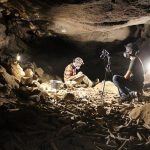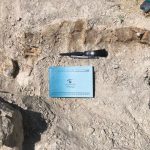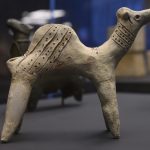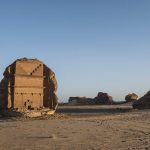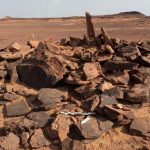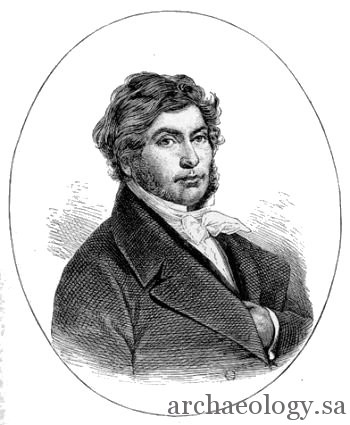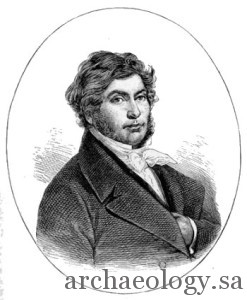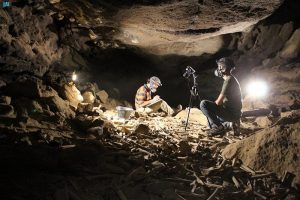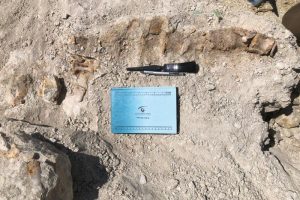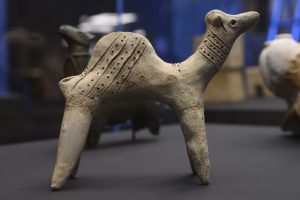Jean-François Champollion (a.k.a. Champollion le jeune; 23 December 1790 – 4 March 1832) was a French scholar, philologist and orientalist, known primarily as the decipherer of the Egyptian hieroglyphs and a founding figure in the field of egyptology. A child prodigy in philology he gave his first public paper on the decipherment of demotic in 1806, and already as a young man held many posts of honor in scientific circles, and spoke Coptic and Arabic fluently. During the early 19th century French culture experienced a period of ‘Egyptomania’, brought on by Napoleon’s discoveries in Egypt during his campaign there (1797–1801) which also brought to light the trilingual Rosetta Stone. Scholars debated the age of the Egyptian civilization and the function and nature of the hieroglyphic script, which language if any it recorded, and the degree to which the signs were phonetic (representing speech sounds) or ideographic (recording semantic concepts directly). Many thought that the script was only used for sacred and ritual functions, and that as such it was unlikely to be decipherable since it was tied to esoteric and philosophical ideas, and did not record historical information. The significance of Champollion’s decipherment was that he showed these assumptions to be wrong, and made it possible to begin to retrieve the many kinds of information recorded by the ancient Egyptians.
Champollion, a liberal and progressive minded man, lived in a period of political turmoil in France which continuously threatened to disrupt his research in various ways. During the Napoleonic wars he was able to avoid conscription, but his Napoleonic allegiances meant that he was considered suspect by the subsequent Royalist regime. His own actions, sometimes brash and reckless, did not help his case. His relations with important political and scientific figures of the time, such as Joseph Fourier and Silvestre de Sacy helped him, although in some periods he lived exiled from the scientific community.
In 1820 Champollion embarked in earnest on the project of decipherment of the hieroglyphic script, soon overshadowing the achievements of British polymath Thomas Young who had made the first advances in decipherment before 1819. In 1822 Champollion published his first breakthrough in the decipherment of the Rosetta hieroglyphs, showing that the Egyptian writing system was a combination of phonetic and ideographic signs – the first such script discovered. In 1824 he published a Précis in which he detailed the decipherment of the hieroglyphic script demonstrating the values of the phonetic and ideographic signs. In 1829 he traveled to Egypt where he was able to read many hieroglyphic texts that had never before been studied, and brought home a large body of new drawings of hieroglyphic inscriptions. Home again he was given a professorship in egyptology, but only lectured a few times before his health, ruined by the hardships of the Egyptian journey, forced him to give up teaching. He died in Paris in 1832, 41 years old. His grammar of Ancient Egyptian was published posthumously.
During his life as well as long after his death intense discussions over the merits of his decipherment were carried out among Egyptologists. Some faulted him for not having given sufficient credit to the early discoveries of Young, accusing him of plagiarism, and others long disputed the accuracy of his decipherments. But with subsequent findings and confirmations of his readings by scholars building on his work, gradually led to general acceptance of his work. Although some still argue that he should have acknowledged the contributions of Young, his decipherment is now universally accepted and has been the basis for all further developments in the field.
Biography
Jean-François Champollion was the last of seven children (two of whom died before he was born). He was raised in humble circumstances; his father Jacques Champollion was a book trader from Valjouffrey near Grenoble who had settled in the small town of Figeac in the Department of Lot. His father was a notorious drunk, and his mother seems to have been mostly an absent figure in the life of young Champollion, who was mostly raised by his older brother Jacques-Joseph. One biographer even speculated that Champollion was not in fact the son of Jacques Champollion’s wife Jeanne-Françoise Gualieu, but the result of an extramarital affair.[1] It was Jacques-Joseph who taught his brother to read, and supported his education. His brother also may have been part of the source of Champollion’s interest in Egypt, since as a young man he wanted to join Napoleon’s Egyptian expedition, and often regretted not being able to go. Often known as the younger brother of better known Jacques-Joseph, Jean-François was often called Champollion le Jeune (the young). Later when his brother became the more famous of the two, Jacques added the town of his birth as a second surname and hence is often referred to as Champollion-Figeac, in contrast to his brother Champollion. Although studious and largely self-educated, Jacques did not have Jean-François’ genius for language; however, he was talented at earning a living, and supported Jean-François for most of his life.
In 1802 Champollion began studies at the school of Abbé Dussert, where his gift for languages first became evident. He started out learning Latin and Greek, but quickly progressed to Hebrew and other Semitic languages such as Arabic, Syriac and Chaldean.[3] It was while a student here that he took up interest in Ancient Egypt. At age 11 he came to the attention to the prefect of Grenoble, Joseph Fourier, who had accompanied Napoleon Bonaparte on the Egyptian expedition which had discovered the Rosetta Stone. An accomplished scholar in addition to a well known mathematical physicist, Fourier had been entrusted by Napoleon with the publication of the results of the expedition in the monumental series of publications titled Description de l’Égypte. One biographer has stated that Fourier invited the 11-year-old Champollion to his home and showed him his collection of Ancient Egyptian artefacts and documents. Champollion was enthralled, and upon seeing the hieroglyphs and hearing that they were unintelligible, he declared that he would be the one to succeed in reading them.Whether or not the report of this visit is true, Fourier did go on to become one of Champollion’s most important allies and supporters, and surely had an important role in instilling his interest in Ancient Egypt.
From 1804 he studied at a lycée in Grenoble, but he hated its strict curriculum which only allowed him to study oriental languages one day per week, and he begged his brother to move him to a different school. Nonetheless at the lycée he took up the study of Coptic, which would become his main linguistic interest for years to come and prove crucial in his approach to decipherment of the hieroglyphs. He had a chance to practice his Coptic when he met Dom Raphaël de Monachis, a former Coptic Christian monk and Arabic translator to Napoleon, who visited Grenoble in 1805. By 1806 Jean-Jacques was making preparations to bring his younger brother to Paris to study at the University. Before leaving however Champollion presented his Essay on the Geographical Description of Egypt before the Conquest of Cambyses before the Academy of Grenoble whose members were so impressed that they admitted him to the Academy.
From 1807 to 1809 Champollion studied in Paris, under Silvestre de Sacy, the first Frenchman to attempt to read the Rosetta stone, and with orientalist Louis-Mathieu Langlès, and with Raphaël de Monachis who was now in Paris. Here he perfected his Arabic and Persian, in addition to the languages that he had already acquired. He divided his time between the College of France, the Special School of Oriental Languages, the National Library where his brother was a librarian and the Commission of Egypt, the institution in charge of publishing the findings of the Egyptian expedition. In 1808 he first began studying the Rosetta stone, working from a copy made by the Abbé de Tersan. Working independently he was able to confirm some of the readings of the demotic previously made by Johan David Åkerblad in 1802.
In 1810, he returned to Grenoble to take up a seat as joint professor of Ancient History at the newly reopened Grenoble University. His salary as an assistant professor at Grenoble was fixed at 750 francs, a quarter of the salary received by full professors.
Never well off and struggling to make ends meet, he also suffered since his youth from chronically bad health, including gout and tinnitus. His health first began to deteriorate during his time in Paris, where the dank climate and unsanitary environment did not agree with him
Political trouble during the Napoleonic Wars
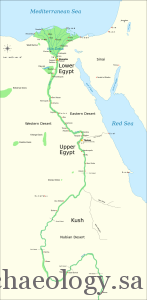
During the Napoleonic Wars, Champollion was a young bachelor and thus liable to compulsory mlitary service, which would have put him in great danger due to the extremely high mortality of soldiers in Napoleon’s armies. Through the assistance of his brother and the prefect of Grenoble Joseph Fourier, who was also an egyptologist, he successfully avoided the draft by arguing that his work on deciphering the Egyptian script was too important to interrupt.[14] First skeptical of the Napoleonic regime, after the fall of Napoleon in 1813 and the institution of the royalist regime under Louis XVIII, Champollion came to consider the Napoleonic state the lesser of two evils. Anonymously he composed and circulated songs ridiculing and criticizing the royal regime – songs that became highly popular among the people of Grenoble.[15] In 1815 Napoleon Bonaparte escaped from his exile on Elba and landed with an army at the Côte d’Azur and marched directly on Grenoble where he was received as a liberator. Here he met with Champollion, whose many requests for exemption from the draft he remembered, and he asked him how his important work was progressing. Champollion replied, that he had just finished his Coptic grammar and dictionary. Napoleon requested that he send the manuscripts to Paris for publication. His brother Jacques joined the Napoleonic cause, putting both of the brothers in danger at the end of the Hundred Days when Napoleon was finally defeated, Grenoble being the last city to resist the royalist advances. In spite of the risk to themselves, having been put under Royalist surveillance, the Champollion brothers nonetheless aided the Napoleonic general Drouet d’Erlon who had been sentenced to death for his participation in the Battle of Waterloo, giving him shelter and helping him escape to Munich. The brothers were condemned to internal exile in Figeac, and Champollion was removed from his university post in Grenoble and the faculty closed.
Under the new Royalist regime, the Champollion brothers invested much of their time and efforts in establishing Lancaster schools, in an effort to provide the general population with education. This was considered a revolutionary undertaking by the Ultra-royalists, who did not believe that education should be made accessible for the lower classes.[17] In 1821 Champollion even led an uprising, in which he and a band of Grenobleans stormed the citadel and hoisted the tricolore instead of the Bourbon Royalist flag. He was charged with treason and went into hiding, but was eventually pardoned.
Family life and later career
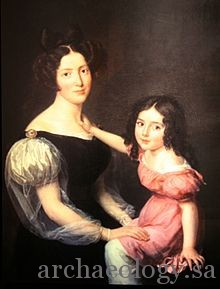
Champollion married Rosine Blanc (1794–1871) in 1818 after four years of engagement, they had one daughter, Zoraïde Champollion (1824–89). Rosine was the daughter of a well-to-do family of Grenoblean glovemakers.[19] At first her father did not approve of the match, since Champollion was a mere professor when they first met, but with his increasing reputation he eventually agreed. Originally Jacques-Joseph did not approve of his brother’s marriage either, finding Rosine too dull-witted, and he did not attend the wedding, but later he grew fond of his sister in-law. Although a happy family man, especially adoring his daughter, Champollion was frequently away from his family for months or even years at a time, while traveling to Paris, to Italy and to Egypt. While in Livorno Champollion developed an infatuation with an Italian poet, Angelica Palli. She presented an ode to Champollion’s work at a celebration in his honor, and the two exchanged letters for a while, but a relationship never realized.[20]
After his groundbreaking discoveries in 1822 he made the acquaintance of the duc de Blacas, an antiquary who became his patron and managed to gain him the favor of the king, who entrusted him with managing the royal oriental collections at the Louvre. He traveled to Turin to inspect a collection of Egyptian materials assembled by Bernardino Drovetti, which Charles X had purchased, cataloguing it. In Turin and Rome he realized the necessity of seeing Egyptian monuments first hand began to make plans for an expedition to Egypt collaborating with Tuscan scholars and the Archduke Leopold. Returning from Egypt in 1830, Champollion was made Professor of Egyptology at the Collège de France, but he only gave three lectures before his illness forced him to give up teaching. In 1824 he became a correspondent of the Royal Institute of the Netherlands.
Deciphering the Egyptian hieroglyphs
The Egyptian hieroglyphs had been well known to scholars of the ancient world for centuries, but few had made any attempts to understand them. Many based their speculations about the script in the writings of Horapollon who considered the symbols to be ideographic, not representing any specific spoken language. Athanasius Kircher for example had stated that the hieroglyphs were symbols that “cannot be translated by words, but expressed only by marks, characters and figures”, meaning that the script was in essence impossible to ever decipher. Others considered that the use of the hieroglyphs in Egyptian society was limited to the religious sphere and that they represented esoteric concepts within a universe of religious meaning that was now lost. But Kircher had been the first to suggest that modern Coptic was a degenerate form of the language found in the Egyptian demotic script,[24] and he had correctly suggested the phonetic value of one hieroglyph – that of mu the Coptic word for water.[25] With the onslaught of Egyptomania in France in the early 19th century, scholars began approaching the question of the hieroglyphs with renewed interest, but still without a basic idea about whether the script was phonetic or ideographic, and whether the texts represented profane topics or sacred mysticism. This early work was mostly speculative, with no methodology for how to corroborate suggested readings. The first methodological advances were Joseph de Guignes’ discovery that cartouches identified the names of rulers, and George Zoëga’s compilation of a catalogue of hieroglyphs, and discovery that the direction of reading depended on the direction in which the glyphs were facing.
Early studies
Champollion’s interest in Egyptian history and the hieroglyphic script developed at an early age. At 16 he gave a paper before the Grenoble Academy in which he argued that the language spoken by the ancient Egyptians in which they wrote the Hieroglyphic texts, was closely related to Coptic. This view proved crucial in becoming able to read the texts, and the correctness of his proposed relation between Coptic and Ancient Egyptian has been confirmed by history. This enabled him to propose that the demotic script represented the Coptic language.
Already in 1806 he wrote to his brother about his decision to become the one to decipher the Egyptian script:
“I want to conduct deep continuing studies into this ancient nation. The enthusiasm which the descriptions of their enormous monuments ignited in me, the admiration which their power and knowledge filled me with, will grow with the new things that I will acquire. Of all the peoples that I love the most, I will confess that no one equals the Egyptians in my heart.”
— Champollion, 1806
In 1808 Champollion received a scare when French Archeologist Alexandre Lenoir published the first of his four volumes on Nouvelles Explications des Hieroglyphes. making the young scholar fear that his budding work had already been surpassed. But he was relieved to find that Lenoir still operated under the assumption that the hieroglyphs were mystic symbols and not a literary system expressing language. This experience made him even more determined to be the first to decipher the language and he began dedicating himself even more to the study of Coptic, writing in 1809 to his brother: “I give myself up entirely to Coptic … I wish to know Egyptian like my French, because on that language will be based my great work on the Egyptian papyri.”
In 1811 Champollion was embroiled in controversy, as Étienne Marc Quatremère, like Champollion a student of Silvestre de Sacy, published his Mémoires géographiques et historiques sur l’Égypte… sur quelques contrées voisines. Champollion saw himself forced to publish as a stand-alone paper the “Introduction” to his work in progress L’Egypte sous les pharaons ou recherches sur la géographie, la langue, les écritures et l’histoire de l’Egypte avant l’invasion de Cambyse (1814). Because of the similarities in the topic matter, and the fact that Champollion’s work was published after Quatremère’s, allegations arose that Champollion had plagiarized the work of Quatremère. Even Silvestre de Sacy, the mentor of both authors, considered the possibility, to Champollion’s great chagrin.
Breakthrough
Although dismissive of Young’s work even before he had read it, Champollion obtained a copy of the Encyclopedia article. Even though he was suffering from a failing health, and the chicanery of the Ultras kept him struggling to maintain his job, it motivated him to return in earnest to the study of the hieroglyphs. When he was eventually removed from his professorship by the Royalist faction, he finally had the time to work on it exclusively. While he awaited trial for treason he produced a short manuscript, De l’écriture hiératique des anciens Égyptiens, in which he argued that the hieratic script was simply a modified form of hieroglyphic writing. Young had already anonymously published an argument to the same effect several years earlier in an obscure journal, but Champollion having been cut off from academia for several years had probably not read it. In addition Champollion made the fatal error of claiming that the hieratic script was entirely ideographic. Champollion himself was never proud of this work and reportedly actively tried to suppress it by buying the copies and destroying them.
These errors were finally corrected later that year when Champollion correctly identified the hieratic script as being based on the hieroglyphic script, but used exclusively on papyrus, whereas the hieroglyphic script was used on stone, and demotic used by the people. Previously it had been questioned whether the three scripts even represented the same language, and hieroglyphic had been considered a purely ideographic script whereas hieratic and demotic were considered alphabetic. Young, in 1815, had been the first to suggest that the demotic was not alphabetic but rather a mixture of “imitations of hieroglyphics” and “alphabetic” signs. Champollion on the other hand correctly considered the scripts to coincide almost entirely, being in essence different formal versions of the same script.
In the same year he an identified the hieroglyphic script on the Rosetta stone as being written in a mixture of ideograms and phonetic signs, just as Young had argued for Demotic.[44] He reasoned that if the script was entirely ideographic the hieroglyphic text would require as many separate signs as there were separate words in the Greek text. But there were in fact fewer, suggesting that the script mixed ideographic and phonetic signs. This realization finally made it possible for him to detach himself from the idea that the different scripts had to be either fully ideographic or fully phonetic, and he recognized it as being much more complex mixture of sign types. This realization gave him a distinct advantage.
Names of rulers
Using the fact that it was known that names of rulers appeared in cartouches, he focused on reading names of rulers as Young had initially tried. Champollion managed to isolate a number of sound values for signs, by comparing the Greek and Hieroglyphic versions of the names of Ptolemy and Cleopatra – correcting Young’s readings in several instances.
In 1822 Champollion received transcriptions of the text on the recently discovered Philae obelisk, which enabled him to double check his readings of the names Ptolemy and Cleopatra from the Rosetta stone. The name “Cleopatra” had already been identified on the Philae obelisk by Bankes who scribbled the identification in the margin of the plate though without any actual reading of the individual glyphs. Young and others would later use that fact that the Cleopatra cartouche had been identified by Bankes to claim that Champollion had plagiarized his work. It remains unknown whether Champollion saw Bankes’ margin note identifying the cartouche or whether he identified it by himself.[47] All in all using this method he managed to determine the phonetic value of 12 signs (A, AI, E, K, L, M, O, P, R, S, and T). By applying these to the decipherment of further sounds he soon read dozens of other names.
Astronomer Jean-Baptiste Biot published proposed decipherment of the controversial Dendera zodiac, in arguing that the small stars following certain signs referred to constellations. Champollion published a response in the Revue encyclopédique, demonstrating that they were in fact grammatical signs, which he called “signs of the type”, today called determinatives. Young had identified the first determinative “divine female”, but Champollion now identified several others.[49] He presented the progress before the academy where it was well received, and even his former mentor-turned-archenemy, de Sacy, praised it warmly, leading to a reconciliation between the two.
The main breakthrough in his decipherment was when he was also able to read the verb MIS related to birth, by comparing the Coptic verb for birth with the phonetic signs MS and the appearance of references to birthday celebrations in the Greek text. It was on September 14, 1822, while comparing his readings to a set of new texts from Abu Simbel that he made the realization. Running down the street to find his brother he yelled “Je tiens mon affaire!” (I’ve got it!) but collapsed from the excitement.
While the name Thuthmose had also been identified (but not read) by Young who realized that the first syllable was spelled with a depiction of an ibis representing Thoth, Champollion was able to read the phonetic spelling of the second part of the word, and check it against the mentioning of births in the Rosetta stone.[Notes 1] This finally confirmed to Champollion that the ancient texts as well as the recent ones used the same writing system, and that it was a system that mixed logographic and phonetic principles.
Letter to Dacier
Main article: Lettre à M. Dacier
A week later on 27 September 1822, he published some of his findings in his Lettre à M. Dacier, addressed to Bon-Joseph Dacier, secretary of the Paris Académie des Inscriptions et Belles-Lettres. Champollion read the letter before the assembled Académie. All his main rivals and supporters were present at the reading, including Young who happened to be visiting Paris. This was the first meeting between the two. The presentation did not go into details regarding the script and in fact was surprisingly cautious in its suggestions. Although he must have been already certain of this, Champollion merely suggested that the script was phonetic already from the earliest available texts, which would mean that the Egyptians had developed writing independently of the other civilizations around the Mediterranean. The paper also still contained confusions regarding the relative role of ideographic and phonetic signs, still arguing that also hieratic and demotic were primarily ideographic.
Scholars have speculated that there had simply not been sufficient time between his breakthrough and collapse to fully incorporate the discovery into his thinking. But the paper presented many new phonetic readings of names of rulers, demonstrating clearly that he had made a major advance in deciphering the phonetic script. And it finally settled the question of the dating of the Dendera zodiac, by reading the cartouche that had been erroneously read as Arsinoë by Young, in its correct reading “autocrator” (Emperor in Greek).
He was congratulated by the amazed audience including de Sacy and Young. Young and Champollion became acquainted over the next days, Champollion sharing many of his notes with Young and inviting him to visit at his house, and the two parted on friendly terms.
Reactions to the decipherment
At first Young was appreciative of Champollion’s success, writing in a letter to his friend that “If he [Champollion] did borrow an English key. The lock was so dreadfully rusty. that no common arm would have had strength enough to turn it.. … You will easily believe that were I ever so much the victim of the bad passions, I should feel nothing but exultation at Mr. Champollion’s success: my life seems indeed to be lengthened by the accession of a junior coadjutor in my researches, and of a person too, who is so much more versed in the different dialects of the Egyptian language than myself.”
Nonetheless the relation between them quickly deteriorated, as Young began to feel that he was being denied due credit for his own “first steps” in the decipherment. Also, due to the tense political climate between England and France in the aftermath of the Napoleonic Wars, there was little inclination to accept Champollion’s decipherments as valid among the English. When Young later read the published copy of the lettre he was offended by the fact that he himself was mentioned only twice, and one of those times being harshly critiqued for his failure in deciphering the name “Berenice”. Young was further disheartened by the fact that Champollion at no point recognized his work as having provided the platform from which decipherment had finally been reached. He grew increasingly angry with Champollion, and shared his feelings with his friends who encouraged him to rebut with a new publication. When by a stroke of luck a Greek translation of a well-known demotic papyrus came into his possession later that year, he did not share that important finding with Champollion. In an anonymous review of the lettre Young attributed the discovery of the hieratic as a form of hieroglyphs to de Sacy and described Champollion’s decipherments merely as an extension of Åkerblad and Young’s work. Champollion recognized that Young was the author, and sent him a rebuttal of the review, while maintaining the charade of the anonymous review. Furthermore, Young, in his 1823 An Account of Some Recent Discoveries in Hieroglyphical Literature and Egyptian Antiquities, including the author’s original alphabet, as extended by Mr. Champollion, he complained that “however Mr Champollion may have arrived at his conclusions, I admit them, with the greatest pleasure and gratitude, not by any means as superseding my system, but as fully confirming and extending it.”(p. 146).
In France Champollion’s success also produced enemies. Edmé-Francois Jomard was chief among them, and he spared no occasion to belittle Champollion’s achievements behind his back, pointing out that Champollion had never been to Egypt and suggesting that really his lettre represented no major progress from Young’s work. Jomard had been insulted by Champollion’s demonstration of the young age of the Dendera zodiac, which he had himself proposed was as old as 15,000 years. This exact finding had also brought Champollion in the good graces of the Catholic Church which had been antagonized by the claims that Egyptian civilization might be older than the church-sanctioned chronology according to which the earth was only 6,000 years old.
The Précis[
Young’s claims that the new decipherments were merely a corroboration of his own method, meant that Champollion would have to publish more of his data to make clear the degree to which his own progress built on a systematicity that was not found in Young’s work. He realized that he would have to make it apparent to all that his was a total system of decipherment, whereas Young had merely deciphered a few words. Over the next year he published a series of booklets about the Egyptian gods, including some decipherments of their names.
Building on his progress, Champollion now began to study other texts in addition to the Rosetta stone, studying a series of much older inscriptions from Abu Simbel. During 1823, he succeeded in identifying the names of pharaohs Ramesses and Thutmose written in cartouches in these ancient texts. With the help of a new acquaintance the Duke de Blacas in 1824, Champollion finally published the Précis du système hiéroglyphique des anciens Égyptiens dedicated to and funded by King Louis XVIII.[59] Here he presented the first correct translation of the hieroglyphs and the key to the Egyptian grammatical system.
In the Précis, Champollion referred to Young’s 1819 claim of having deciphered the script when he wrote that:
“A real discovery would have been to have really read the hieroglyphic name, that is, to have fixed the proper value to each of the characters it is composed of, and in such a manner, that these values were applicable everywhere that these characters appear
— [Précis, 1824, p. 22]”
This task was exactly what Champollion set out to accomplish in the Précis, and the entire framing of the argument was as a rebuttal to M. le docteur Young, and the translation in his 1819 article which Champollion brushed off as “a conjectural translation”.
In the introduction Champollion described his argument in points:
That his “alphabet” (in the sense of phonetic readings) could be employed to read inscriptions from all of the periods of Egyptian history.
That the discovery of the phonetic alphabet is the true key to understanding the entire hieroglyphic system.
That the ancient Egyptians used the system in all of the periods of Egyptian history to represent the sounds of their spoken language phonetically.
That all of the hieroglyphic texts are composed almost entirely of the phonetic signs that he had discovered.
Champollion never admitted any debt to Young’s work,[43] although in 1828, a year before his death, Young was appointed to the French Academy of Sciences, with Champollion’s support.
The Précis cemented Champollion as having the main claim to the decipherment of the hieroglyphs. In 1825 his former teacher and enemy Silvestre de Sacy reviewed his work positively stating that it was already well “beyond the need for confirmation”.[62] In the same year, Henry Salt put Champollion’s decipherment to the test, successfully using it to read further inscriptions, he published a corroboration of Champollion’s system, in which he also criticized Champollion for not acknowledging his dependence on Young’s work.
With his work on the Précis Champollion realized that in order to advance further he needed more texts, and transcriptions of better quality. This caused him to spend the next years visiting collections and monuments in Italy, which convinced him of the fact that many of the transcriptions from which he had been working had been inaccurate – hindering the decipherment, and he made a point of making his own copies of as many texts as possible. During his time in Italy he met the Pope who congratulated him on having done a “great service to the Church”, by which he was referring to the counter arguments he had provided against the challengers to the biblical chronology. Champollion was ambivalent, but the Pope’s support helped him in his efforts to secure funds for an expedition
Franco-Tuscan Expedition
In 1827 Ippolito Rosellini, who had first met Champollion during his 1826 stay in Florence, went to Paris for a year in order to improve his knowledge of the method of Champollion’s system of decipherment. The two philologists decided to organize an expedition to Egypt to confirm the validity of the discovery. Headed by Champollion and assisted by Rosellini, his first disciple and great friend, the mission was known as the Franco-Tuscan Expedition, and was made possible by the support of the grand-duke of Tuscany, Leopold II, and the King of France, Charles X.[20] Champollion and his second-in-command Rossellini were joined on the expedition by Charles Lenormant, representing the French government, and a team of eleven Frenchmen and Italians including the artist Giuseppe Angelelli.
In preparation for the expedition Champollion wrote the French Consul General Bernardino Drovetti for advice on how to secure permission from the Egyptian Khedive and Ottoman Viceroy Muhammad Ali of Egypt. Drovetti had initiated his own business of exporting plundered Egyptian antiques and did not want Champollion meddling in his affairs. He sent a letter discouraging the expedition stating that the political situation was too unstable for the expedition to be advisable. The letter reached Jacques Joseph Champollion a few weeks before the expedition was scheduled to leave, but he conveniently delayed in sending it on to his brother until after the expedition had left.
On 21 July 1828, the expedition boarded the ship Eglé at Toulon and set sail for Egypt and they arrived in Alexandria on August 18. Here Champollion met with Drovetti who continued to warn about the political situation but assured Champollion that the Pasha would give his permission for the expedition to proceed. Champollion, Rosselini and Lenormant met with the Pasha on August 24, and he immediately gave his permission. However after more than a week of waiting for the permissions Champollion suspected that Drovetti was working against him and took a complaint to the French consulate. The complaint worked and soon the pasha provided the expedition with a large river boat. The expedition bought a small boat for five persons. Champollion named them the Isis and the Athyr after Egyptian goddesses. On September 19 they arrived in Cairo, where they stayed until October 1 when they left for the desert sites of Memphis, Saqqara and Giza.
While examining texts in the tombs at Saqqara in October, Champollion realized that the hieroglyphic word for “hour” included the hieroglyph representing a star, which served no phonetic function in the word. He wrote in his journal that the star glyph was “the determinative of all divisions of time”. Determinatives are an important part of the hieroglyphic writing system. Champollion probably struck upon the concept while in Egypt, as it had not appeared in the 1828 edition of the Précis.Champollion also saw the sphinx and lamented that the inscription on its chest was covered by more sand than they would be able to remove in a week. Arriving in Dendera on November 16, Champollion was excited to see the Zodiac that he had deciphered in Paris. Here he realized that the glyph that he had deciphered as autocrator and which convinced him that the inscription was of recent date was in fact not found on the monument itself – it had seemingly been invented by Jomard’s copyist. Champollion nonetheless, realized that the late date was still correct, based on other evidence. After a day at Dendera the expedition continued on to Thebes.
Champollion was particularly captured by the array of important monuments and inscriptions at Thebes, and decided to spend as much time there as possible on the way back north. South of Thebes the Isis sprang leak and nearly sank, having lost many provisions and spent several days repairing the boat they continued south to Aswan where the boats had to be left, since they could not make it across the first Cataract. They traveled by small boats and camelback to Elephantine and Philae. At Philae Champollion spent several days recovering from an attack of gout brought on by the hard trip, and he also received letters from his wife and brother, both sent many months earlier. Champollion attributed their delay to Drovetti’s ill will. They arrived at Abu Simbel on November 26, the site had been visited by Bankes and Belzoni in 1815 and 1817 respectively, but the sand that they had cleared from the entrance had now returned. On January 1, 1829 they reached Wadi Halfa and returned north. That day Champollion composed a letter to M. Dacier stating that “I am proud now, having followed the course of the Nile from its mouth to the second cataract, to have the right to announce to you that there is nothing to modify in our “Letter on the Alphabet of the Hieroglyphs.” Our Alphabet is good.”
Even though Champollion was appalled by the rampant looting of ancient artefacts and destruction of monuments, the expedition also contributed to the destruction. Most notably, while studying the Valley of the Kings, he damaged KV17, the tomb of Seti I, by removing a wall panel of 2.26 x 1.05 m in a corridor. English explorers attempted to dissuade the destruction of the tomb, but Champollion persisted, stating that he had the permission of the Muhammad Ali Pasha.[71] Champollion also carved his name into a pillar at Karnak. Champollion himself noted and lamented the widespread looting and destruction of monuments, and in a letter to the Pasha recommended that tourism, excavation and trafficking of artefacts be strictly controlled. Champollion’s suggestions may have led to Muhammad Ali’s 1835 ordinance prohibiting all exports of antiquities and ordering the construction of a museum in which to house the ancient artifacts.
On the way back they stayed again at Thebes from March to September, making many new drawing and paintings of the monuments there. Here, at the Valley of the Kings the expedition moved into the tomb of Ramesses the 4th (of the 20th dynasty), where the air was cooler. They also located the tomb of Ramesses the Great, but it was badly looted. It was here that Champollion first received news of Young’s campaign to vindicate himself as the decipherer of the hieroglyphs and to discredit Champollion’s decipherments. He received this news only a few days after Young’s death in London.
The expedition arrived in back in Cairo in late September 1829 where the expedition bought 10,000 francs worth of antiquities, a budget extended to them by minister Rochefoucauld. Arriving in Alexandria they were notified that the French boat that would take them back was delayed, and they had to stay here two months until the sixth of December. On their return to Alexandria, the Khedive Muhammad Ali Pasha, offered the two obelisks standing at the entrance of Luxor Temple to France in 1829, but only one was transported to Paris, where it now stands on the Place de la Concorde.[74] Champollion and the Pasha spoke often and on the Pasha’s request Champollion wrote an outline of the history of Egypt. Here Champollion had no choice but to challenge the short Biblical chronology arguing that Egyptian civilization had its origins at least 6000 years before Islam. The two also spoke about social reforms, Champollion championing education of the lower classes – a point on which the two did not agree.
Returning to Marseille, the members of the expedition had to spend a month in quarantine on the ship before being able to continue on towards Paris.
The expedition led to a posthumously published extensive Monuments de l’Égypte et de la Nubie (1845).
Death
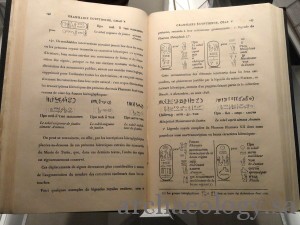
Exhausted by his labors during and after his scientific expedition to Egypt, Champollion died of an apoplectic attack (stroke) in Paris in 1832 at the age of 41. He is buried in Père Lachaise Cemetery.[77] On his tomb is a simple obelisk erected by his wife, and a stone slab stating simply: Ici repose Jean-François Champollion, né à Figeac dept. du Lot le 23 décembre 1790, décédé à Paris le 4 mars 1832 (Here rests Jean-François Champollion, born at Figeac, Department of the Lot, on 23 December 1790, died at Paris on 4 March 1832).
Certain portions of Champollion’s works were edited by Jacques and published posthumously. His Grammar and Dictionary of Ancient Egyptian had been left almost finished, and was published posthumously in 1838. Before his death he had told his brother “Hold it carefully, I hope that it will be my calling card for posterity”.[79] It contained his entire theory and method, including classifications of signs and their decipherments, and also a grammar including how to write and conjugate nouns and verbs. But it was marred by the still tentative nature of many readings, and Champollion’s conviction that the hieroglyphs could be read directly in Coptic, whereas in fact they represented a much older stage of the language which differs in many ways from Coptic.
Jacques’s son, Aimé-Louis (1812–94), wrote a biography of the two brothers,[81] and he and his sister Zoë Champollion, were both interviewed by Hermine Hartleben whose major biography of Champollion was published in 1906.
Champollion’s decipherment remained controversial even after his death. The brothers Alexander and Wilhelm von Humboldt famously championed his decipherment, as did Silvestre de Sacy, but others, such as Gustav Seyffarth, Julius Klaproth and Edmé-François Jomard sided with Young and refused to consider Champollion to be more than a talented imitator of Young even after the posthumous publication of his grammar. In England, Sir George Lewis still maintained 40 years after the decipherment, that since the Egyptian language was extinct it was a priori impossible to decipher the Hieroglyphs.[84][85] In a reply to Lewis’ scathing critique, Reginald Poole, an egyptologist, defended Champollion’s method describing it as “the method of interpreting Hieroglyphics originated by Dr. Young and developed by Champollion”.[86] Also Sir Peter Le Page Renouf defended Champollion’s method, although he was less deferential to Young.
Building on Champollion’s grammar his student Karl Richard Lepsius continued to develop the decipherment, realizing in contrast to Champollion that vowels were not written. Lepsius became the most important champion of Champollion’s work. In 1866, the Decree of Canopus, discovered by Lepsius, was successfully deciphered using Champollion’s method, cementing his reputation as the true decipherer of the hieroglyphs.
Legacy
Figeac honors him with La place des Écritures, a monumental reproduction of the Rosetta Stone by American artist Joseph Kosuth (pictured to the right).[88] And a museum devoted to Jean-François Champollion was created in his birthplace at Figeac in Lot.[89] It was inaugurated on 19 December 1986 in the presence of President François Mitterrand and Jean Leclant, Permanent Secretary of the Academy of Inscriptions and Letters . After two years of building work and extension, the museum re-opened in 2007. Besides Champollion’s life and discoveries, the museum also recounts the history of writing. The whole façade is covered in pictograms, from the original ideograms of the whole world.[90]
In Vif in Isère, The “Musée Champollion” is located at the former the abode of Jean-François’s brother.
Champollion has also been portrayed in many films and documentaries: For example he was portrayed by Elliot Cowan in the 2005 BBC docudrama Egypt. In David Baldacci’s thriller involving the CIA, Simple Genius, the character named “Champ Pollion” was derived from Champollion.
In Cairo, a street carries his name, leading to the Tahrir Square where the Egyptian Museum is located.
Also named after him is the Champollion crater, a lunar crater on the far side of the moon.[93]
See also
Decipherment of Egyptian hieroglyphs
Works
Le Normant, ed. (1819). Annales des Lagides, ou chronologie des rois grecs d’Égypte successeurs d’Alexandre le Grand. Paris.
Lettre à M. Dacier relative à l’alphabet des hiéroglyphes phonétiques. 1822.
Panthéon égyptien, collection des personnages mythologiques de l’ancienne Égypte, d’après les monuments (explanatory text to illustrations by Léon-Jean-Joseph Dubois). 1823.
Précis du système hiéroglyphique des anciens Égyptiens. 1824. ;
Lettres à M. le Duc de Blacas d’Aulps. 1826. ;
Notice descriptive des monuments égyptiens du musée Charles X. 1827. ;
Précis du système hiéroglyphique des anciens Égyptiens ou Recherches sur les éléments premiers de cette écriture sacrée, sur leurs diverses combinaisons, et sur les rapports de ce système avec les autres méthodes graphiques égyptiennes. 1828.
Lettres écrites d’Égypte et de Nubie. 1828–1829. ;
Grammaire égyptienne. 1836. ;
Dictionnaire égyptien en écriture hiéroglyphique. 1841.
Others – Principes généraux de l’écriture sacrée, new edition with a preface by Christiane Ziegler, Institut d’Orient, 1984.
Notes
Jump up ^ Champollion read the name Thutmose as consisting of the logogram Thoth represented by the Ibis and two phonetic signs M and S. In reality however the second sign was MS, not simple M, giving the actual reading THOTH-MS-S. Champollion never realized that some phonetic signs included two consonants.Gardiner (1952)
From Wikipedia, the free encyclopedia

